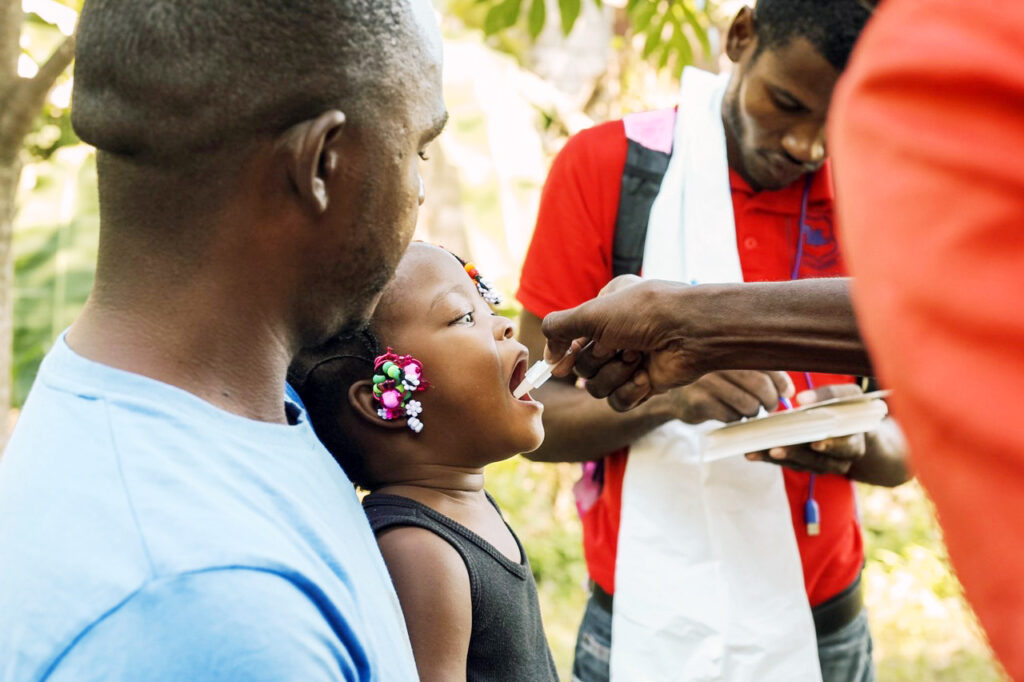PHOTOS: A Rural Health Center In Sierra Leone, Renewed
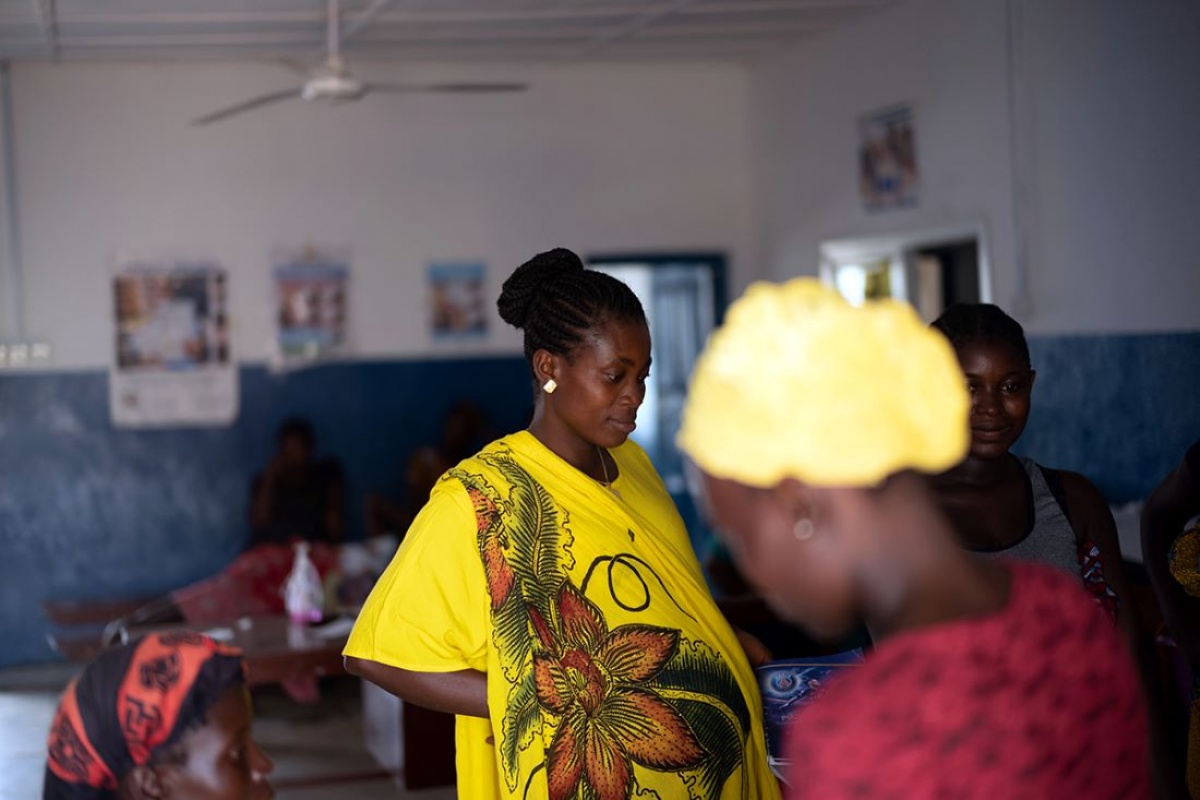
Comprehensive investments from PIH mean higher-quality care for rural patients
Posted on July 2, 2021
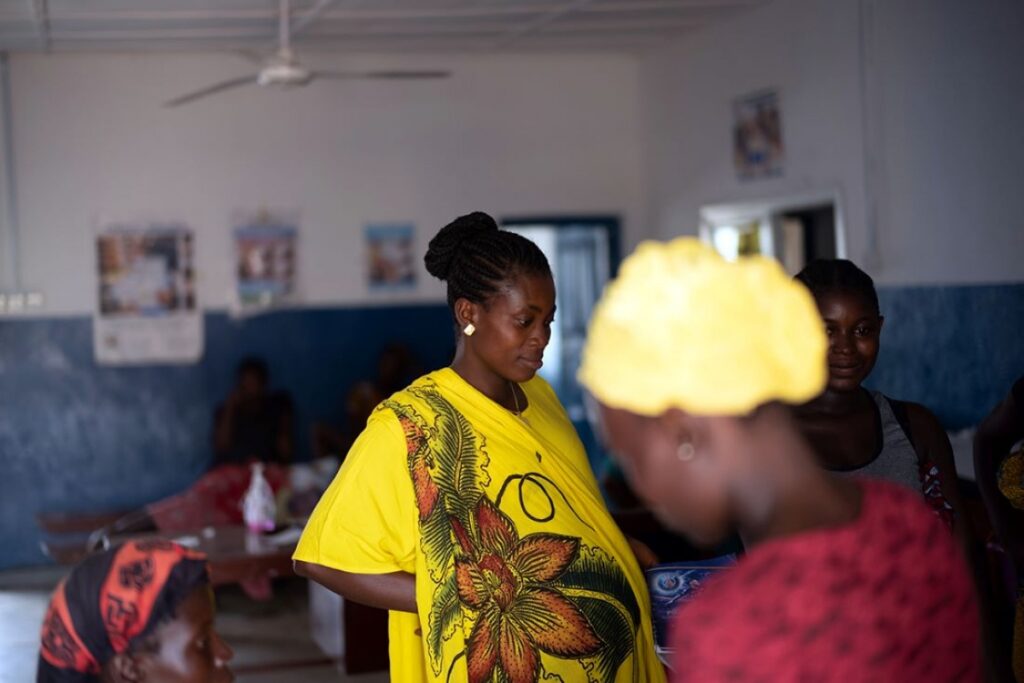
This April, Elizabeth Momoh delivered her fifth child at Sewafe Community Health Center in Kono District, Sierra Leone.
“Ah so gladi,” she said in Krio, during her last prenatal appointment before her due date. “I’m so happy.”
Momoh, 28, has been visiting this health center her whole life. She grew up in the small town of Sewafe, which is a 45-minute drive outside of Koidu, the capital of Kono. In 2011, she delivered her first baby there. With four children at home, she’s made countless trips to the clinic for pre- and postnatal care and for check-ups when one of her kids has a fever or rash.
It was only in the last year, however, that Momoh and her family began receiving high-quality care at Sewafe—because of comprehensive investments from Partners In Health in the health center’s staff, stuff, space, and systems.
“We suffered,” Momoh recalled of the previous decade. “There was only one building. There were no laboratory tests. There was no medication. They would write you a prescription and you would have to go buy it. This was very difficult for those of us without money.”

This was—and still is—the reality at community health centers throughout Kono. And it’s partly why, for years, the district was widely considered the worst place in the country—and among the worst places in the world—for health care.
The tragic irony wasn’t lost on Sierra Leoneans: Koidu Government Hospital (KGH)—the only hospital in the country’s rural, eastern-most district, with a population of 500,000—went without running water, consistent electricity, trained doctors, and stocked pharmacy shelves, even as it stands in the shadow of West Africa’s largest diamond mine. Though home to a wealth of natural resources, Kono is impoverished due to decades of colonialism, the slave trade, and civil war—and its health system is no exception.
Today, this reality is changing. With support from Partners In Health, KGH is now widely considered the best public hospital in Sierra Leone, and the nearby Wellbody Clinic serves as a model for health clinics across the country. Patients from Kono and across Sierra Leone, as well as from neighbouring Guinea and Liberia, flock to both facilities to receive never-before-available health services, from primary care to complex surgeries, at little to no cost.
Yet availability does not mean access. In rural communities like Sewafe, social and economic barriers prevent thousands of families from accessing this high-quality health care. Living in extreme poverty, commonly as subsistence farmers, many would-be patients cannot afford to take time away from work to make a sometimes hours-long trip to KGH or Wellbody. Nor can they afford the cost of a motorbike ride to and from Koidu—typically, some 20,000 leones, the equivalent of two dollars. Nor is that motorbike ride always possible—during Sierra Leone’s months-long rainy season, already cumbersome dirt roads become flooded to the point of impassability.
Because of these obstacles, local community health centers offer the most convenient, least disruptive path to health care. But all too often, stepping inside these small clinics is like stepping into the past. Electricity is fickle. Plumbing is nonexistent. Pharmacies and laboratories are nearly empty. And clinicians are undertrained.
Proximity to home was the main reason Momoh chose to attend Sewafe Community Health Center—and even then, she is part of a minority. Most families in Kono skip visiting their local clinic altogether, knowing the facilities are unequipped to deliver adequate, affordable health care.
As such, for most rural families in the district, high-quality care remains catastrophically expensive, or out of reach entirely.
That’s why, starting in 2019, PIH deepened its commitment to strengthening Kono’s health system top-to-bottom and began supporting community health centers with tried-and-true investments in staff, stuff, space, systems, and social support. PIH’s goals are two-fold: first and foremost, to widen access to quality health care for more of Kono’s population, especially those most marginalized by poverty and geography; and, relatedly, to relieve pressure from Wellbody Clinic and KGH by creating more options for patients to choose from.
Sewafe is the first of six local health centers to have received comprehensive support from PIH, through partnership with local health leaders. Such support over the course of 2020 has led to vast improvements to care—even amid the COVID-19 pandemic, when many health facilities saw the quality of their care decline due to global supply chain disruptions and the need to divert drugs and medical supplies.
Standing outside the health center after her appointment, Momoh said she has observed Sewafe only getting better.
“It’s very different now,” she said. “Many people are coming now because there is free treatment for you and your children. They’ll give you your diagnosis and treat you. That wasn’t happening before.”
Below, see how the health center has transformed, from under-resourced and sparsely attended to ever-improving in quality and impact.
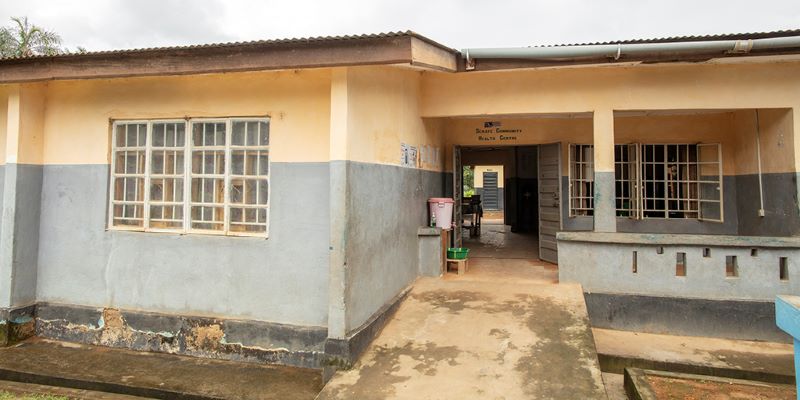
In 2019, PIH conducted a baseline assessment of Sewafe’s clinical capacity to understand its strengths and weaknesses in providing health care. Staff used a globally-standardized scoring system that produces a “service readiness score,” taking into account the availability of basic amenities, medicines, and equipment; the center’s infection prevention and control capacity; and diagnostics.
In other words, they measured whether Sewafe had the staff, stuff, space, and systems to deliver quality health care.
In 2019, the facility scored a 61%. (For comparison, Wellbody Clinic’s service readiness score was 90%.)
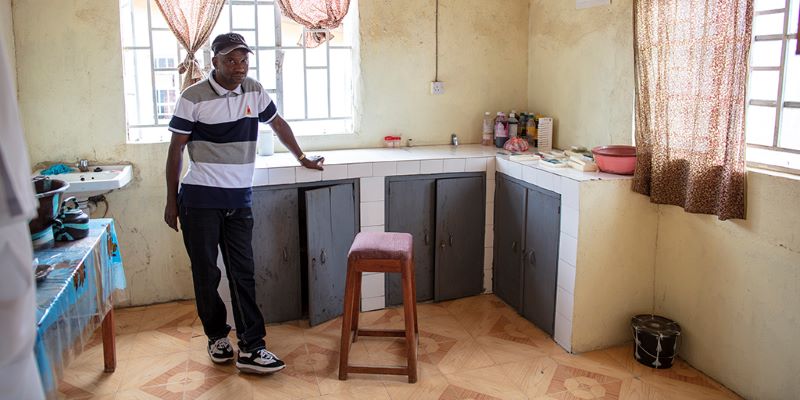
One of the major barriers to effective health care was pharmacy and laboratory capacity. Pharmacy shelves remained nearly empty, and the lab lacked equipment to do most tests. As Momoh pointed out, patients could rarely get a diagnosis, let alone the medication they needed to heal or to manage a chronic condition.
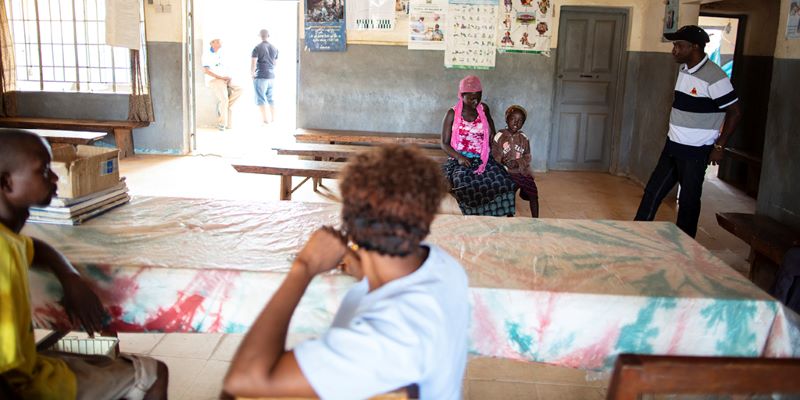
Patient attendance reflected these limitations. In 2019, before PIH’s renovations, a total of 5,972 patients visited Sewafe. On average, clinicians saw fewer than 20 patients per day.

Starting in September 2019, PIH’s infrastructure team set to work and completed a host of renovations, including: installing solar power to allow for 24-hour electricity; digging a new well for access to safe water; introducing plumbing; improving air circulation, for better infection prevention and control; installing air conditioning for the safe storage of medications; and completely redoing building interiors.
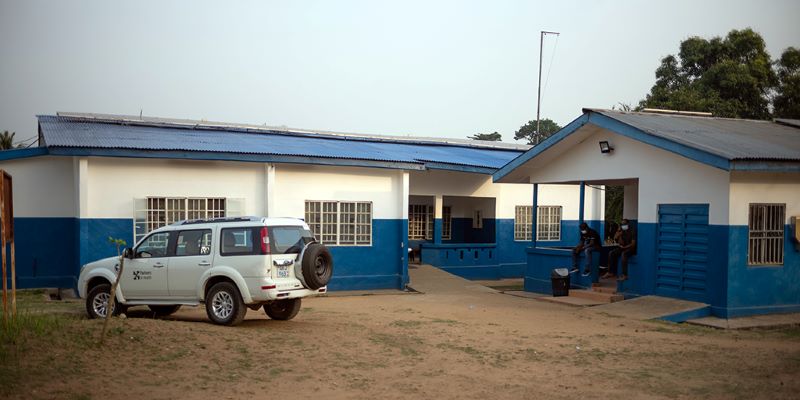
These infrastructure improvements converted Sewafe into a safer, more dignified health center.
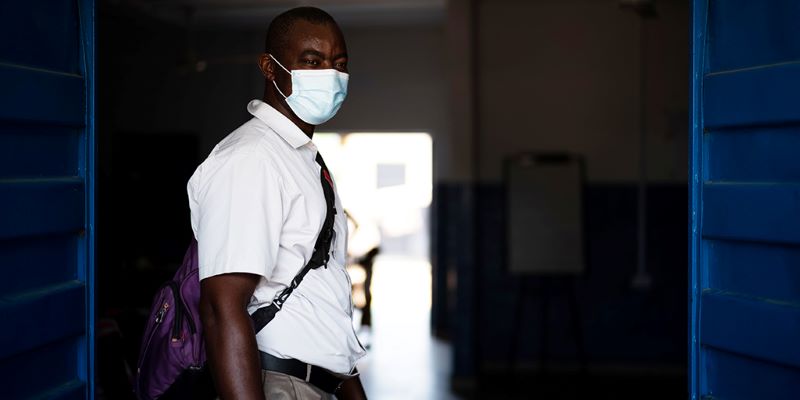
Improvements weren’t limited to the building itself. John Cooper Combey, a community health officer and PIH’s primary care clinical manager, has coordinated and led trainings for staff at Sewafe, from nurses looking to improve their skills in the delivery room to lab technicians eager to learn how to conduct never-before-available tests.
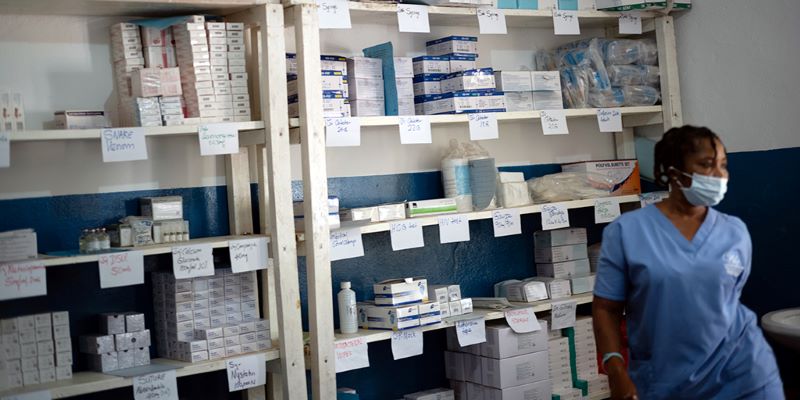
Clinicians also gained access to the drugs they long sought to prescribe to patients. Through PIH’s support, Sewafe has stocked its pharmacy shelves with essential medicines, all of which are provided to patients free of charge.
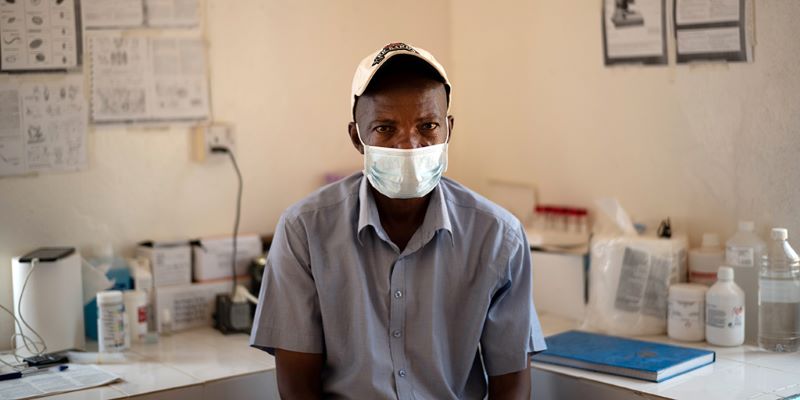
With new equipment and supplies from PIH, Sewafe’s diagnostic capacity also improved. Lab Manager Aiah S. Mbayoh, who has worked at the health center for nearly 20 years, noted these positive changes.
“We started lab operations in 2006, and we were only concentrating on tuberculosis, maybe stool and urine tests,” Mbayoh said. “But with the intervention of PIH, we have so many other things we can focus on: hepatitis, typhoid, HIV, malaria, sickle cell, diabetes.
“Patients are happy, as tests are now happening that did not happen in the past. And I’m happy because learning is good for me.”
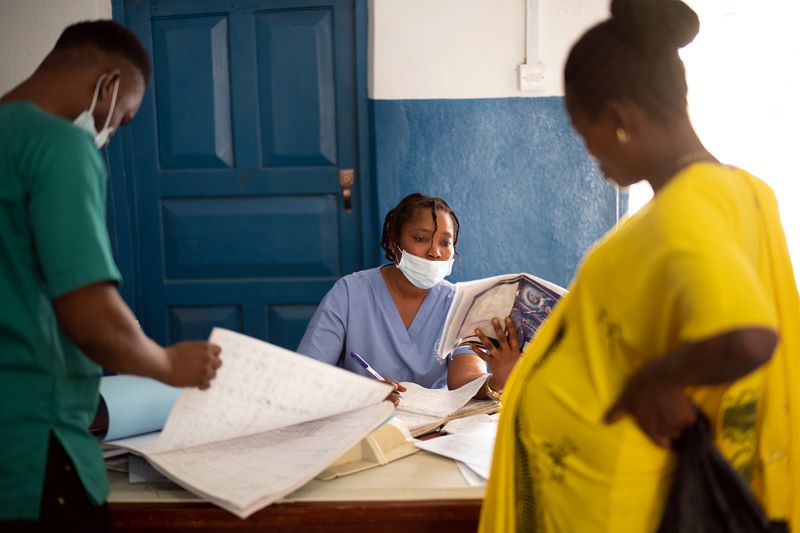
Nurse Ramatulai Sewaneh has also seen first-hand the changes in patients’ opinions of Sewafe—and in the sheer number of them. “The biggest difference,” she said, “is that we’re seeing plenty, plenty, plenty of patients now. And they’re coming from other districts, too.
“They are praising the clinic, saying the medicine here is good, and telling others to come.”
The data confirms these observations: In 2020, a total of 9,470 patients visited Sewafe—a 59% increase from the previous year. In November 2019, staff saw only 453 patients; the following November, they saw 2,339 patients.

Much of the increase in patients has been related to maternal and child health: Sewafe saw a 19% increase in patients arriving for prenatal care and a 45% increase in patients under 5 years old.
According to Margaret Bundo, a maternal and child health aide who has worked at Sewafe for six years, “Everything is in our possession now. So we take care of patients better, and more women are coming. It’s almost like a mini hospital now.
“I like to help my people,” she added. “That’s why I rise to be a nurse. Not for money, but to help and save lives.”
A year later, another assessment confirmed what all of these clinicians had been observing: Sewafe’s service readiness score—its ability to provide effective health care—had climbed to 81%.
There are still many more improvements to be made. But with this 20% increase, Sewafe’s foundation is now set, thanks to support from PIH and the Ministry of Health.
In Momoh’s words, “They care for us well, and kindly.”
Article originally published on pih.org
Learn more about the five unique elements that drive our global work at Partners In Health.



